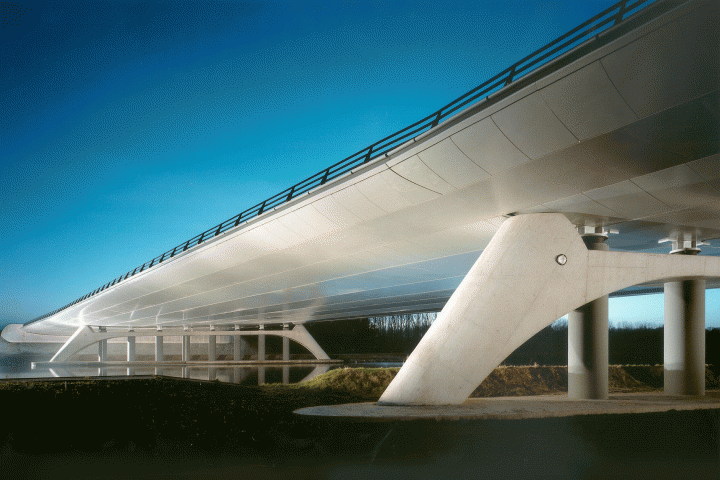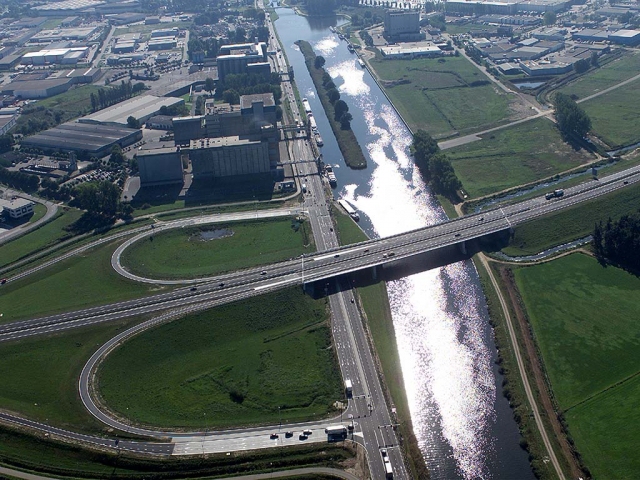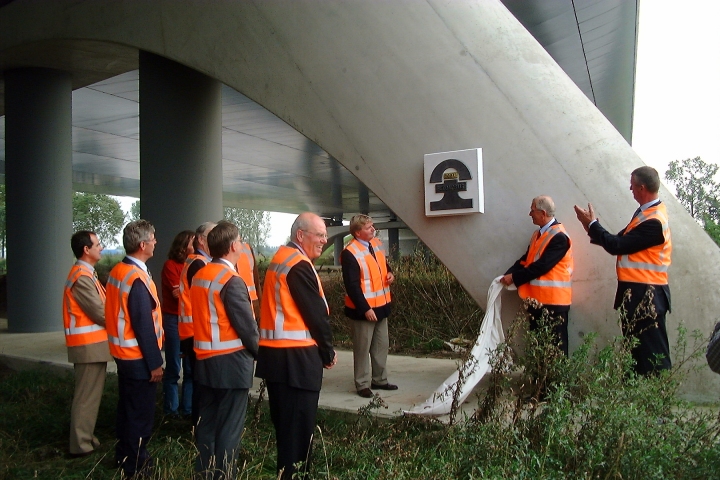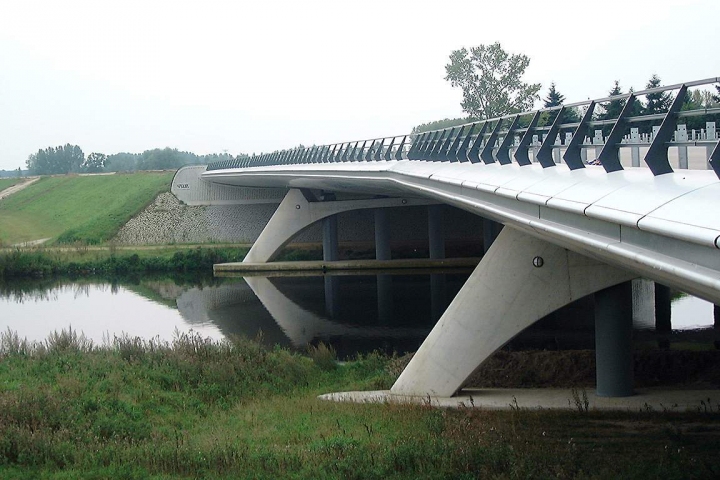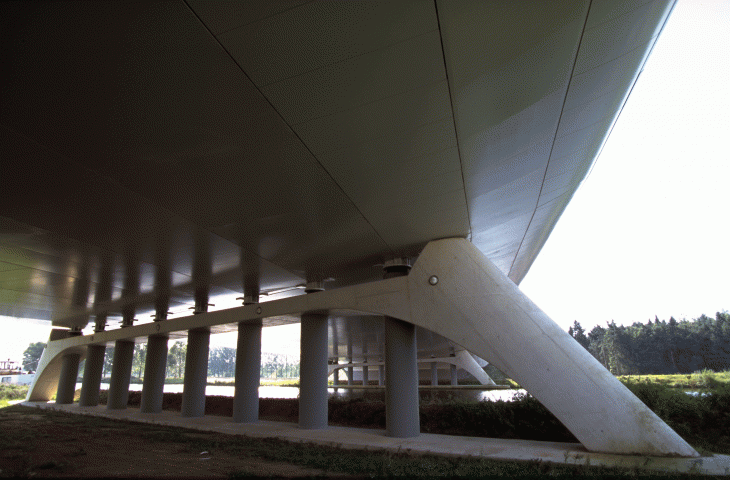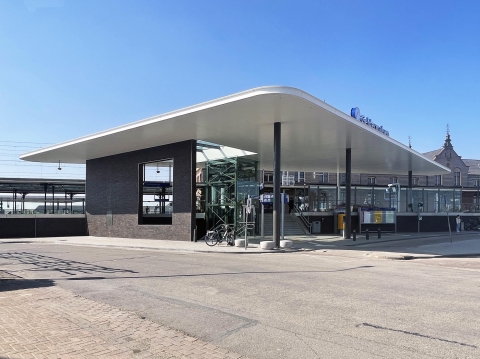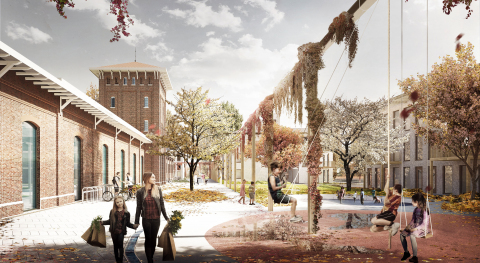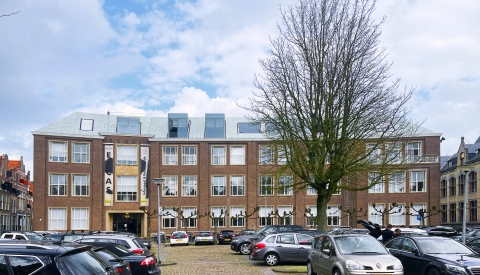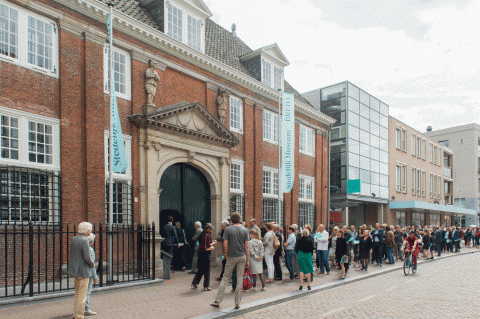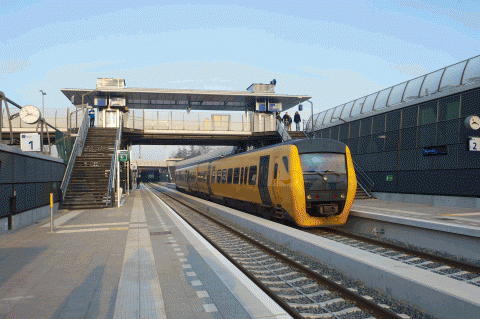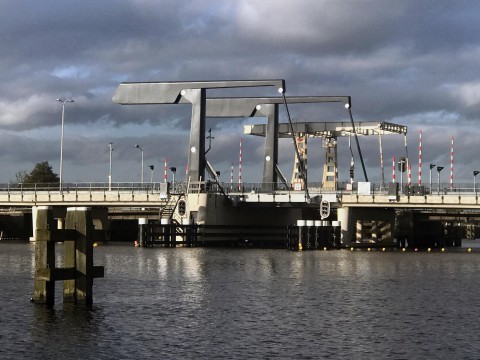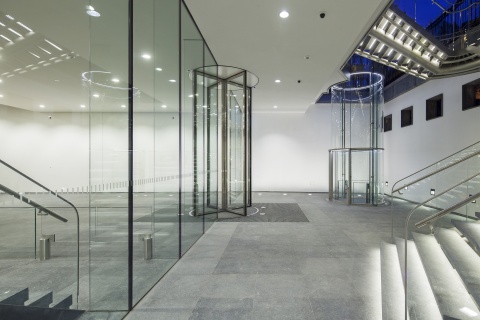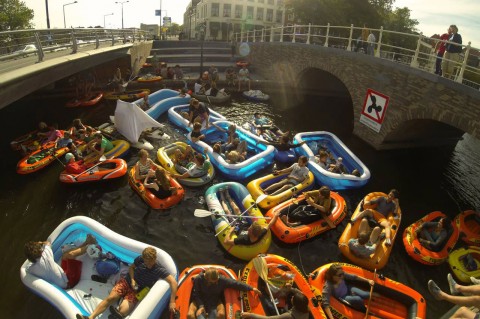Julian J. Ewell Bridge
The Zuidwillemsvaart is a canal dug in 1822-1826 when Belgium and the Netherlands were still one monarchy under King Willem I. The landscape where highway A50 crosses the canal is a delicate arrangement of open space, screened by rows of trees. This calls for a carefully designed bridge.
The choice was made for a slab bridge, slender at the edges to visually diminish construction height, already at a minimal 1/36th of the span. This flat construction is achieved through a combination of steel and concrete. Six steel tubular girders are connected with dowels to the pre-stressed concrete deck. On both sides of the canal the span is supported by eight columns that are connected at the top by a shore beam.
In this way, the construction is ‘disassembled’ and made visible, while at the same time the separate columns combine into one integrated bridgehead. At the bearings, where forces are at a maximum, construction appears light and transparent. Reflected sunlight twinkles on the underside of the deck. This bridge seems to float.
| Function | Infrastructure |
| Status | Realized |
Client |
Rijkswaterstaat |
Location |
A50 - Veghel |
Project architect |
Hans van Heeswijk |
Start |
1997 |
Completed |
2000 |
Span |
55 m |


